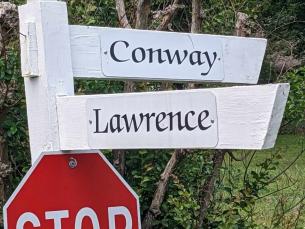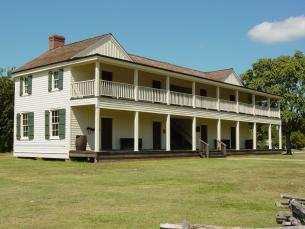A Plant for Pollinators: Discovering the Rio Grande Clammyweed
By: Chris AdamsHistoric Washington State Park recently received a generous donation of various native flowering plants, which have been planted throughout the park's gardens. Among these is the Rio Grande Clammyweed (Polanisia dodecandra (L.) DC. ssp. riograndensis Iltis). This perennial plant is native to the southern United States, Mexico, and parts of Central and South America. It typically grows in sandy areas, such as roadsides, open woods, and prairies.
It is commonly referred to as a redwhisker clammyweed due to the fluffy, pinkish-purple hairs that protrude from its flower head. This plant can reach a height of up to three feet. It blooms during the summer months and has a long history of medicinal uses among indigenous peoples in the Americas.
Clammyweed has been designated as the 2024 Unofficial Pollinator Plant of the Year, an initiative started by the Texas Butterfly Ranch in 2019. This drought-tolerant, purple-blooming legume serves as an important nectar source for many pollinators during extreme heat when other nectar sources may be scarce. As a result, it has been included in pollinator seed mixes for several years.
According to a Texas seed supplier, a trial conducted near Kingsville, Texas, found that clammyweed attracted more than 50 species of butterflies. It also serves as a host plant for the Cabbage White, Checkered White, and Great Southern White butterflies.
Additionally, the seeds of Clammyweed are an excellent protein source for birds, including mourning doves, turkeys, and bobwhite quail. This plant is drought-tolerant, has a long blooming period, and can withstand grazing by deer and livestock.
The gardening staff at our park chose to plant the donated Rio Grande Clammyweed in the Purdom herb garden to attract pollinators and highlight its historical medicinal uses. Make sure to stop by and see it the next time you visit the park!



